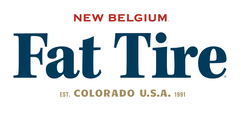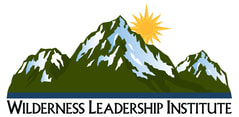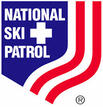Snowpack Summary February 19, 2022
Posted by Allen Giernet @ 7:50pm (this summary expires in 24 hours)
This summary applies to backcountry areas only.
The Bottom Line –
Warm temperatures and light winds keep Wet Loose avalanches on our problem list. Watch for signs of wet loose instability, roller balls especially from rock bands and outcroppings and sinking into wet snow to your ankles. Also be aware off the potential for firm icy conditions in the morning and sheltered areas.
If you venture out please submit your observations to the avalanche center Submit Reports page.
Posted by Allen Giernet @ 7:50pm (this summary expires in 24 hours)
This summary applies to backcountry areas only.
The Bottom Line –
Warm temperatures and light winds keep Wet Loose avalanches on our problem list. Watch for signs of wet loose instability, roller balls especially from rock bands and outcroppings and sinking into wet snow to your ankles. Also be aware off the potential for firm icy conditions in the morning and sheltered areas.
If you venture out please submit your observations to the avalanche center Submit Reports page.
Problem #1

Loose Wet avalanches are the release of wet unconsolidated snow or slush. These avalanches typically occur within layers of wet snow near the surface of the snowpack, but they may quickly gouge into lower snowpack layers. Like Loose Dry Avalanches, they start at a point and entrain snow as they move downhill, forming a fan-shaped avalanche. Other names for loose-wet avalanches include point-release avalanches or sluffs. Loose Wet avalanches can trigger slab avalanches that break into deeper snow layers.
General Summary
Warming continues and will keep Wet loose avalanches on our problem list today. be aware of rapid changes as you travel and change elevations and aspects. Move out of steep terrain or change aspect if you find yourself sinking into wet snow to your ankles or observe roller balls developing where you are. In the morning firm icy conditions will be possible and could remain at higher elevations especially in sheltered terrain.
There is a snow storm forecast for early next week with reports of variable surface and weak layers at the surface in several areas expect avalanche danger to increase next week. Especially with strong winds forecast along with new light snow.
Special note we are currently training with little to no service and will not be updated until next Tuesday or Wednesday.
Exercise caution on slopes over 30° as these conditions will exist throughout all mountain ranges. Always exercise caution when entering into winter mountain areas. Bring a Beacon Shovel and Probe and know how to use them. Travel with a partner and make conservative decisions.
Warming continues and will keep Wet loose avalanches on our problem list today. be aware of rapid changes as you travel and change elevations and aspects. Move out of steep terrain or change aspect if you find yourself sinking into wet snow to your ankles or observe roller balls developing where you are. In the morning firm icy conditions will be possible and could remain at higher elevations especially in sheltered terrain.
There is a snow storm forecast for early next week with reports of variable surface and weak layers at the surface in several areas expect avalanche danger to increase next week. Especially with strong winds forecast along with new light snow.
Special note we are currently training with little to no service and will not be updated until next Tuesday or Wednesday.
Exercise caution on slopes over 30° as these conditions will exist throughout all mountain ranges. Always exercise caution when entering into winter mountain areas. Bring a Beacon Shovel and Probe and know how to use them. Travel with a partner and make conservative decisions.
General Mountain Weather Forecast |
2-19-22
Saturday - Mostly clear skies with warm temperatures and light winds.
Sunday - Mostly clear skies with slightly cooler temps and light winds.
Monday will begin a cooling trend as a cols storm system moves are way. There will be a slight chance fo snow overnight becoming likely snow by Tuesday with much colder temperatures and low snowline forecast. Strong winds are forecast with the new snowfall through Wednesday. Expect avalanche danger to rise during this period. Much colder temperature for Thursday and slow warming into the weekend. Firm and icy conditions will accompany the early snow fall as temperatures drop following the warming trend.
Saturday - Mostly clear skies with warm temperatures and light winds.
Sunday - Mostly clear skies with slightly cooler temps and light winds.
Monday will begin a cooling trend as a cols storm system moves are way. There will be a slight chance fo snow overnight becoming likely snow by Tuesday with much colder temperatures and low snowline forecast. Strong winds are forecast with the new snowfall through Wednesday. Expect avalanche danger to rise during this period. Much colder temperature for Thursday and slow warming into the weekend. Firm and icy conditions will accompany the early snow fall as temperatures drop following the warming trend.
Click here for this Season's Snow Pack Summaries
To better understand the challenges and potential variability over the large area we are producing information for please read our Snowpack Summary - Format and Limitations
Disclaimer:
This Bulletin is designed to generally describe conditions where local variations always occur. Travelers are advised to exercise caution and make slope specific evaluations. As always, please treat this bulletin with appropriately guarded skepticism and make your own assessments. Help to provide more information to the community by reporting your observations
This Bulletin is designed to generally describe conditions where local variations always occur. Travelers are advised to exercise caution and make slope specific evaluations. As always, please treat this bulletin with appropriately guarded skepticism and make your own assessments. Help to provide more information to the community by reporting your observations
Click on the links below for the latest information
Latest Observtions
Click on the observation to go to the full report
|
Observation type
Avalanche Location - Mt. Baden Powel Date (yyyymmdd) - 20220213 Comment - On Sunday around 10:00 a.m. I hiked up the mountain baden-powell trail with my dog with the intent to snowboard down the path of the trail. Before arriving at the trailhead, I snapped a picture of a previous very large avalanche that had run down the gully to the east of the hiking trail. This slide looks like it had been there for a while. I then hiked up to the point where my map shows that I turned around because my dog slid out on the ice after I had observed the crown of a previous avalanche above and a wind slab across the trail that had been tracked in. I have photos of this avalanche, but I'm only able to upload one photo. I then went back along the same path and proceeded to transition into my snowboard. While transitioning, my snowboard slid out and kept sliding down the slope. I went after it, and slid out until I was able to self arrest on a tree and catch my dog behind me. Looking downhill, directly to the right of me between me and the trail was another avalanche that seemed relatively new that I do not believe I caused. While proceeding uphill to safer terrain, I observed rollerballing and boot penetration. These conditions exist very close to the Mount Baden Powell trail and could take out an unsuspecting victim at any time. Be safe out there! I do have several other pictures that I can provide for context, but do not have photos of the last avalanche that I mentioned because it was too dangerous. |
Observation type
Avalanche Location - Mt Baden Powel Date (yyyymmdd) - 20220213 Comment I decided to make the most of the 60F temps in Wrightwood this Sunday and hopped on the bike for a spin up ACH to Vincent Gap. I proceeded beyond the locked gate to see how the snowpack was holding up in the N and NW faces of Baden Powell, and stumbled upon the remains of some HUGE natural slides--presumably from the last storm cycle on 12/30/21. The most significant of the three slides I saw was in the main N facing drainage just beyond the bridge. I'd estimate it was R4 D3 based on the fact that the snow ran all the way down the embankment below and into Big Rock Creek. The debris pile at ACH where Caltrans has carved through it was easily 15-20ft high and littered with snapped trees and rocks entrained along the way. Big picture: the local snowpack is taking a major hit with the prolonged dry spell and warming temps in the high country. I'm concerned that if/when we get another significant storm this season, it will be atop a heinous melt/freeze crust or on a bed of facets that seem to be prevalent on steeper shaded N aspects |
Observation type -
Snowpack Location - Mt. Waterman Date (yyyymmdd) - 20220211 Comment - Some rockfall on the drive in, including coming off NW-N aspects. Limited to no snow remaining below 7000 feet on drive in from La Canada. Good coverage on N facing slopes in Waterman area. Deeper at some ridge tops that look to have had wind loading in previous storm. No freeze overnight. Aspects outside of N were soft early and showing signs of significant melt by 9am in sunny areas. Sheltered N aspects had decent corn conditions with soft melt freeze going down a few cm. Boot and ski packed areas in more exposed terrain remained firm and fast. Overall surprisingly good skiing in sheltered N facing areas with coverage. |
Observation type
Snowpack Location - Stockton Flats Date (yyyymmdd) - 20220210 Comment - Went for a snow hike up the Stockton flats area Lytle creek north fork. Stopped at 7300 feet. Went to do some recon for snow depth and coverage. Plenty of coverage above 7000 feet in this area. |
General Caution
You should always use safe terrain management and carry avalanche rescue equipment in the backcountry. Most avalanches are triggered by someone in the party or the victim. Practice with your rescue gear often and be prepared should the worst happen. Though we do not have an avalanche forecast center in this area as of yet, the information posted and shared here as well as the resources available on this site will help to make informed decisions for your backcountry travels. Use avalanche forecasts in your travels wherever available and be aware that avalanche ratings are general information. Elevation, location, geographic variability’s, slope aspect and angle all have effects on the particular area you travel in. This is only one piece of the information you should use in your decision making process. There is no substitute for avalanche education, for more resources and information as well as education please refer to our resources page.
You should always use safe terrain management and carry avalanche rescue equipment in the backcountry. Most avalanches are triggered by someone in the party or the victim. Practice with your rescue gear often and be prepared should the worst happen. Though we do not have an avalanche forecast center in this area as of yet, the information posted and shared here as well as the resources available on this site will help to make informed decisions for your backcountry travels. Use avalanche forecasts in your travels wherever available and be aware that avalanche ratings are general information. Elevation, location, geographic variability’s, slope aspect and angle all have effects on the particular area you travel in. This is only one piece of the information you should use in your decision making process. There is no substitute for avalanche education, for more resources and information as well as education please refer to our resources page.






















